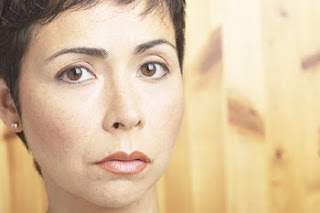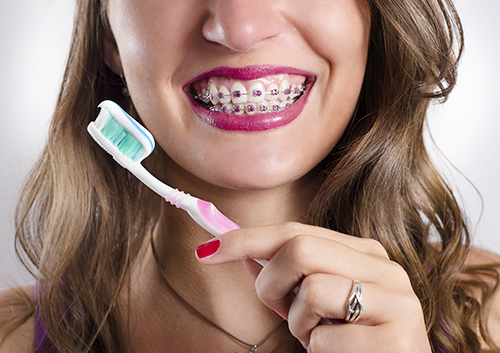
Imagine that you’re only going to brush your teeth once tomorrow. Don’t worry, we know you would never skimp on your dental hygiene like that, but let’s just pretend for a moment. When would be the best time to brush? When you wake up? During the day? Or perhaps before you go to bed?
Actually, whenever you choose to brush, you’ll receive important overall dental benefits as well as specific benefits tied to the time of day. Let’s explore your daily schedule to see why.
Brushing in the Morning
Brushing when you first jump out of bed produces several positive results.
- Cleaning plaque from your teeth
Plaque is a sticky film made up of oral bacteria, food particles, and saliva. As you sleep, these oral bacteria multiply and produce acids which attack the minerals in your enamel, leaving weak spots which, over time, can become cavities. Brushing removes these bacteria and acids from your enamel before they cause serious harm.
Moreover, plaque hardens if it’s left undisturbed, turning into tartar in a relatively short time. And once plaque becomes tartar, it must be removed by a dental professional. Brushing first thing in the morning removes this plaque buildup and helps prevent tartar from forming.
That bacterial growth we mentioned? It’s also responsible for morning breath. If nothing else, brushing when you wake up means greeting a fresh day with fresh breath, and that’s reason enough to pick up your brush in the morning.
Brushing During the Day
Brushing after meals and snacks also has a lot to recommend it.
- “Leftovers” lead to cavities
Foods, especially foods rich in sugar and carbohydrates, are converted by oral bacteria into acids which weaken enamel and lead to cavities. When food particles remain in the mouth after a meal, bacteria have more time and more fuel to manufacture these acids.
- Acidic foods also affect your teeth
If you have eaten something acidic, such as citrus fruits, sodas, or pickled anything, the acids from these foods can temporarily weaken the mineral strength of your enamel. But brushing immediately after eating or drinking acidic foods can damage weakened enamel. Better to rinse well with water and brush after half an hour or so.
One of the first things you discover when you get your braces is that you might need to brush more often. In fact, it’s best to brush after every meal and even every snack while you’re in braces.
Why? First, because no one wants to smile with food particles sticking to brackets and wires. Even more important, though, the filmy plaque which sticks to your enamel can be harder to remove with those brackets and wires in the way. Since plaque causes weakened enamel and cavities, brushing thoroughly is more important than ever when you wear braces.
Wearing clear aligners means you don’t need to worry about food trapped in brackets or cleaning around wires. After all, you take them out when you eat. But this doesn’t mean you are home free. Brushing after every meal is also a good idea when you wear aligners.
Our teeth have an organic way to help wash away food particles, acids, and bacteria between brushings—saliva! Your aligners, while covering your teeth, decrease their exposure to saliva. It’s really important, then, to make sure you brush after eating. Otherwise, food particles and acids which remain on your teeth after eating are trapped in your aligners, increasing the risk of enamel erosion and decay.
Whether you wear braces or aligners, you’re especially at risk for food particles sticking around your teeth and in your orthodontic appliances. Talk to Dr. Yan Razdolsky about when to brush your teeth after eating and how to keep your braces or aligners clean throughout the day.
Brushing at Night
Growing up, you probably received regular reminders to brush before bedtime—for several really good reasons:
- Saliva production slows while you sleep
During the day, saliva helps to wash away food particles and neutralize acidity in our mouths. It also contains proteins and minerals which help keep tooth enamel strong. But as we sleep, saliva production slows dramatically, and our bodies can’t remove bacteria and acids as effectively.
- Food particles fuel bacterial growth
If you haven’t brushed since morning, you’ve accumulated a whole day’s worth of food particles from meals and snacks. Remember, oral bacteria use the sugars and carbs we eat as fuel to produce the acids which attack our tooth enamel throughout the night.
- Brushing helps prevent both of these problems
Brushing your teeth before bed not only cleans away the accumulated food particles of the day, but also eliminates the plaque and bacteria which would have a much easier time sticking to your teeth without that daytime saliva flow to wash them away.
So, When’s the Best Time to Brush?
In the morning, during the day, at night—there are solid advantages to brushing any time of day. The question isn’t so much when to brush as how often you should brush.
While many dental professionals consider brushing before bedtime as the most important brush of the day, brushing at least two full minutes, at least twice during a 24 hour period, is a necessity for basic dental hygiene, along with flossing at least once a day.
When you’ve been eating sugary snacks, when you’re showing signs of gingivitis or getting more than your share of cavities, when you want to reduce the chance of plaque and tartar buildup, or when you simply want to make sure you’re doing everything you can to maintain your overall dental health, brushing after meals is also highly recommended.
And when you wear braces or aligners, frequent brushing (and flossing) is the very best way to make sure your teeth stay clean and cavity-free.
Talk to Dr. Yan Razdolsky about your brushing habits at your next appointment at our Forever Smiles Team at our Buffalo Grove office. No need to use your imagination to plan your best brushing schedule. We have all the answers you need to help you brush your way to your best—and healthiest—smile!




























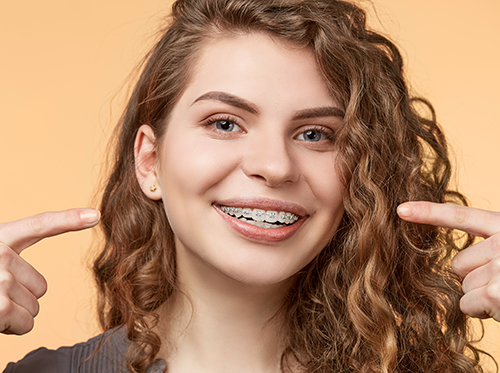




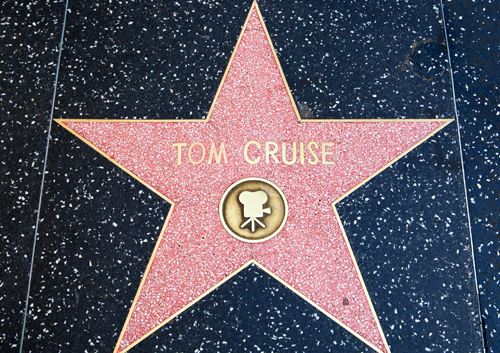














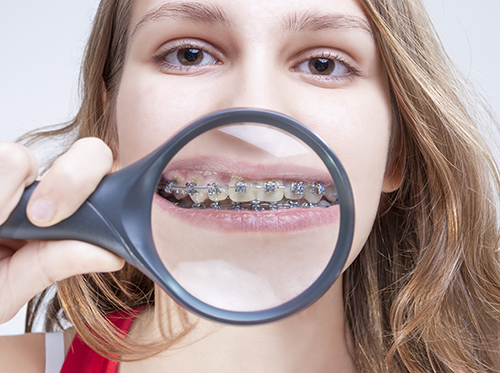





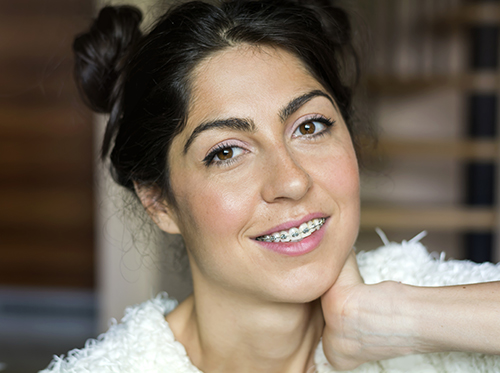
















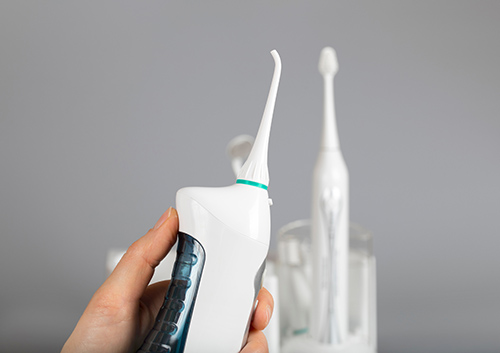




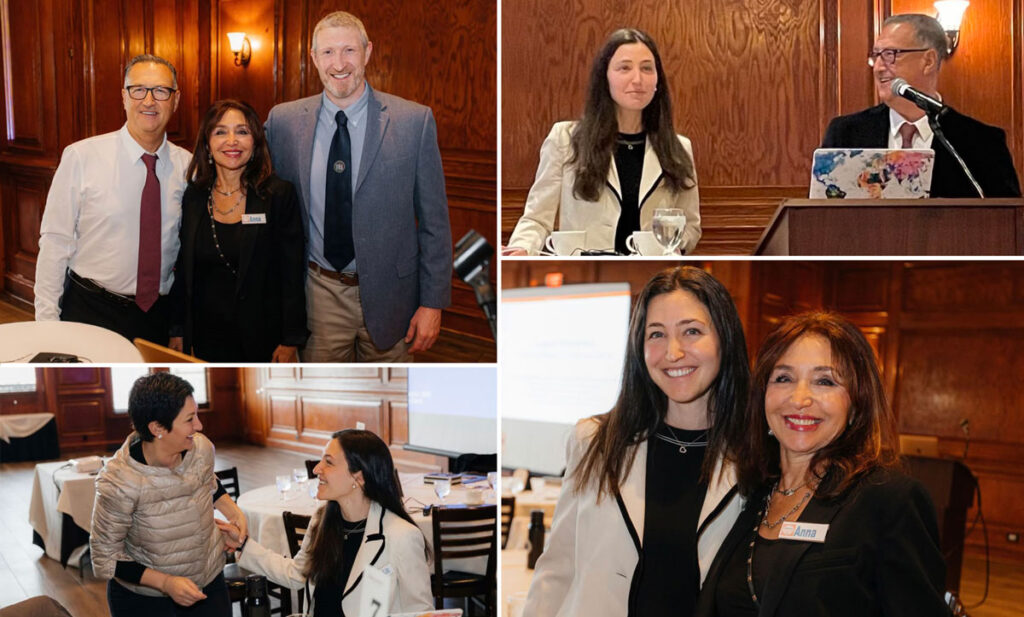




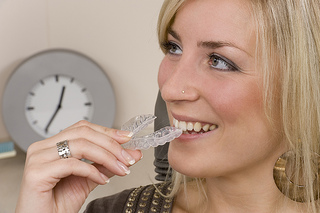
































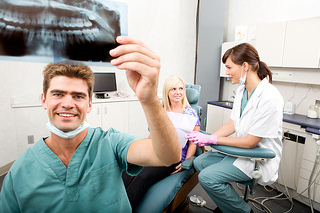
 Look around at all the holiday shoppers or at festive seasonal events and you can see that people smile for a variety of reasons. After all, there are so many types of smiles and different circumstances that impact how and why we smile, each representing a multitude of responses and emotions ranging from the obvious to more complex. During the holidays for example, your smile can convey a variety of emotions beyond merriment and good cheer, but also surprise, embarrassment and even naughtiness!
Look around at all the holiday shoppers or at festive seasonal events and you can see that people smile for a variety of reasons. After all, there are so many types of smiles and different circumstances that impact how and why we smile, each representing a multitude of responses and emotions ranging from the obvious to more complex. During the holidays for example, your smile can convey a variety of emotions beyond merriment and good cheer, but also surprise, embarrassment and even naughtiness!









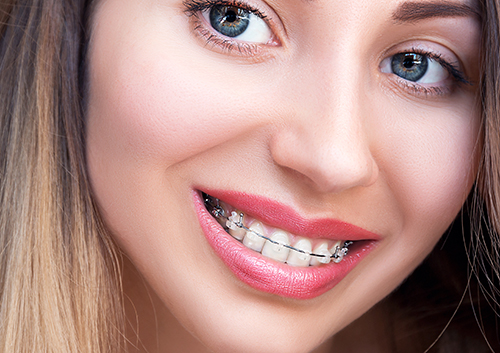
 From Hippocrates and Aristotle who first recorded tooth irregularities to modern day first- and second-generation orthodontists like Dr. Yan Razdolsky and Dr. Elizabeth Razdolsky Michalczyk who work to preserve patient smiles, the study of dental orthopedics and development of treatment options has come full circle to create a better aligned and healthier Forever Smile. In this first of a three-part series, we will explore just how orthodontics has evolved through the generations to impact how our dynamic father / daughter duo work side by side today.
From Hippocrates and Aristotle who first recorded tooth irregularities to modern day first- and second-generation orthodontists like Dr. Yan Razdolsky and Dr. Elizabeth Razdolsky Michalczyk who work to preserve patient smiles, the study of dental orthopedics and development of treatment options has come full circle to create a better aligned and healthier Forever Smile. In this first of a three-part series, we will explore just how orthodontics has evolved through the generations to impact how our dynamic father / daughter duo work side by side today. The Greatest Generation, also called the GI Generation (1901-1924), was so coined by Tom Brokaw in tribute to the hard working, resilient and gritty Americans who lived through the Great Depression and fought in WWII. For this generation, orthodontics was still in its infancy. For working-class parents of this generation, fixed braces demanding extensive medical treatment and made from expensive materials such as gold wire were simply too expensive for the general population.
The Greatest Generation, also called the GI Generation (1901-1924), was so coined by Tom Brokaw in tribute to the hard working, resilient and gritty Americans who lived through the Great Depression and fought in WWII. For this generation, orthodontics was still in its infancy. For working-class parents of this generation, fixed braces demanding extensive medical treatment and made from expensive materials such as gold wire were simply too expensive for the general population.



 Dr. Yan Razdolsky, Anna, and the entire Forever Smiles family are excited to announce that Elizabeth Razdolsky Michalczyk, DMD, PhD will be joining our office, having just graduated from her orthodontic residency program in Atlanta, Georgia!
Dr. Yan Razdolsky, Anna, and the entire Forever Smiles family are excited to announce that Elizabeth Razdolsky Michalczyk, DMD, PhD will be joining our office, having just graduated from her orthodontic residency program in Atlanta, Georgia!



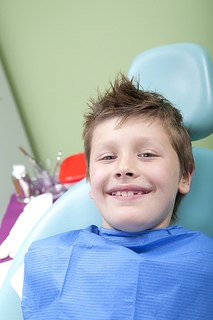
 For many patients seeking treatment for tooth alignment, there is the preferred option of clear aligners. In fact, Dr. Yan Razdolsky and the Forever Smiles team place or swap these orthodontic appliances on patients every day. And while he counsels that this treatment is not for everyone, he does suggest they can be a safe and effective way for some patients to achieve a straighter smile. But have they improved enough since their introduction to the market to provide better treatment? Let’s explore!
For many patients seeking treatment for tooth alignment, there is the preferred option of clear aligners. In fact, Dr. Yan Razdolsky and the Forever Smiles team place or swap these orthodontic appliances on patients every day. And while he counsels that this treatment is not for everyone, he does suggest they can be a safe and effective way for some patients to achieve a straighter smile. But have they improved enough since their introduction to the market to provide better treatment? Let’s explore!



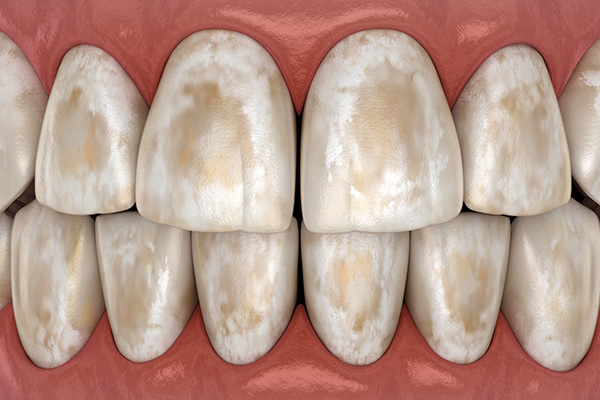
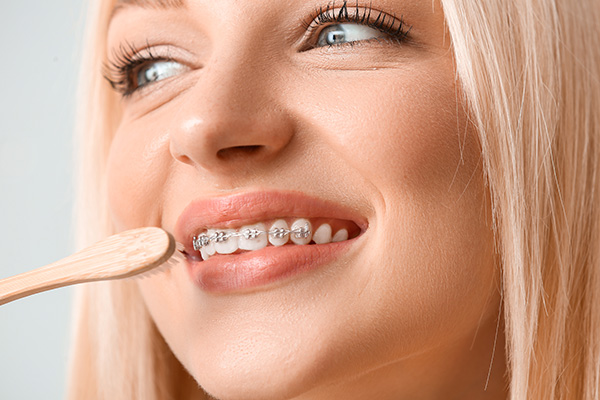









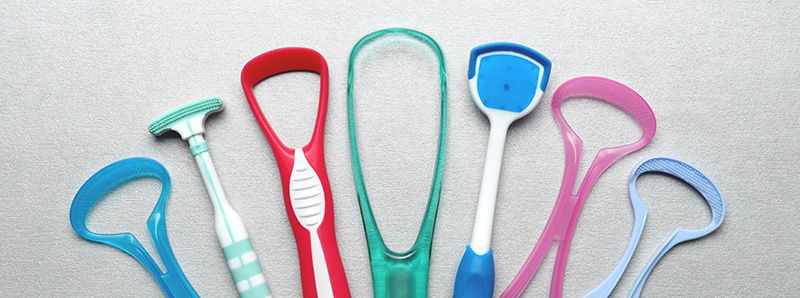
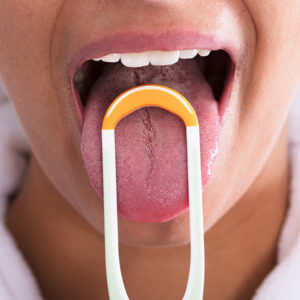





 Dental anthropology is a distinct subfield of bioarcheology and physical anthropology. It studies development, eruption, number, size, morphology, modification, wear, and pathology of teeth. It helps scientists answer questions about our ancestral evolution, as well as the diversity of humans and animals through analyzing variations in the form and dimensions of teeth, as well as micro- and molecular analysis of dental components.
Dental anthropology is a distinct subfield of bioarcheology and physical anthropology. It studies development, eruption, number, size, morphology, modification, wear, and pathology of teeth. It helps scientists answer questions about our ancestral evolution, as well as the diversity of humans and animals through analyzing variations in the form and dimensions of teeth, as well as micro- and molecular analysis of dental components.

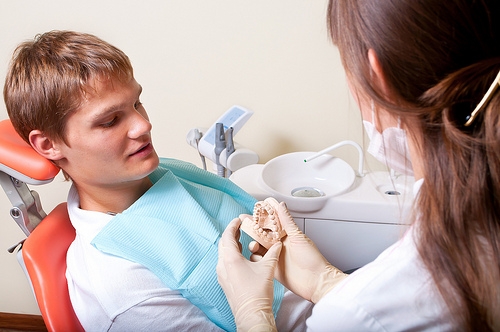






 As a child’s permanent teeth erupt, their deciduous or primary teeth begin to fall out. For most children that is around age 5 or 6, although they can appear sooner or later depending on and correlating with when the baby teeth first came in. As these “adult” teeth emerge however, the applied pressure along with biological stimuli cause the child’s baby tooth roots to dissolve, allowing them to loosen and ultimately come out naturally. But what if your child’s tooth comes out due to trauma, or maybe one larger erupting tooth forces out two baby teeth at the same time? What if extraction becomes necessary due to decay? How does this impact the timing and health of incoming permanent teeth?
As a child’s permanent teeth erupt, their deciduous or primary teeth begin to fall out. For most children that is around age 5 or 6, although they can appear sooner or later depending on and correlating with when the baby teeth first came in. As these “adult” teeth emerge however, the applied pressure along with biological stimuli cause the child’s baby tooth roots to dissolve, allowing them to loosen and ultimately come out naturally. But what if your child’s tooth comes out due to trauma, or maybe one larger erupting tooth forces out two baby teeth at the same time? What if extraction becomes necessary due to decay? How does this impact the timing and health of incoming permanent teeth?
 For some, holiday occasions are one of the most-anticipated events of the season, and what’s not to love? There’s delicious food, holiday lights, gift exchanges and so much to prepare for - from dressing up in sparkly jewelry, to polishing up those dance shoes. Everyone wants to look their best this season, but if you wear braces you might be concerned your orthodontics will steal the attention away from your celebratory smile. If you are worried about your braces being the standout feature when it’s time to deck the halls, Dr. Yan Razdolsky and the Forever Smiles team have a few suggestions which may help ease your concerns and have you joyfully ringing in the holidays.
For some, holiday occasions are one of the most-anticipated events of the season, and what’s not to love? There’s delicious food, holiday lights, gift exchanges and so much to prepare for - from dressing up in sparkly jewelry, to polishing up those dance shoes. Everyone wants to look their best this season, but if you wear braces you might be concerned your orthodontics will steal the attention away from your celebratory smile. If you are worried about your braces being the standout feature when it’s time to deck the halls, Dr. Yan Razdolsky and the Forever Smiles team have a few suggestions which may help ease your concerns and have you joyfully ringing in the holidays.




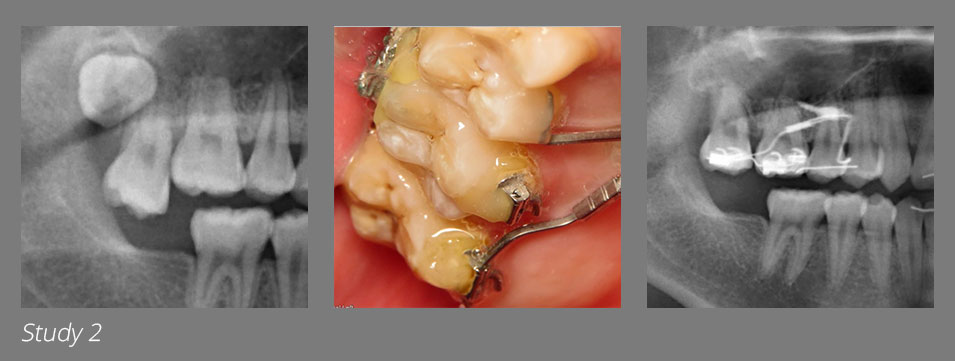






 As patients head back to 5-day, in-person learning (or full time in the office) we are reminded that to help protect ourselves and each other, we are all in this together. In the past we have shared with you the infection control procedures we have adopted from the American Dental Association (ADA), the U.S. Centers for Disease Control and Prevention (CDC) and the Occupational Safety and Health Administration (OSHA). It is with these recommendations we truly believe we can best help protect our community and each other. If there’s something to be learned from this pandemic the takeaway is this; let’s all adopt easy measures to benefit not only ourselves, but our families and community as a whole. Here’s what we’re doing. We encourage you to review these actions and see how they parallel with what Chicago Public Schools (CPS) recommends we can do to help keep us all safe and healthy.
As patients head back to 5-day, in-person learning (or full time in the office) we are reminded that to help protect ourselves and each other, we are all in this together. In the past we have shared with you the infection control procedures we have adopted from the American Dental Association (ADA), the U.S. Centers for Disease Control and Prevention (CDC) and the Occupational Safety and Health Administration (OSHA). It is with these recommendations we truly believe we can best help protect our community and each other. If there’s something to be learned from this pandemic the takeaway is this; let’s all adopt easy measures to benefit not only ourselves, but our families and community as a whole. Here’s what we’re doing. We encourage you to review these actions and see how they parallel with what Chicago Public Schools (CPS) recommends we can do to help keep us all safe and healthy.


 Visiting Dr. Razdolsky and your Forever Smiles team about every four to twelve weeks is an important part of your orthodontic treatment. That’s why we work hard to make sure that your appointments are as convenient and productive as possible. But if you ever needed a reason to plan ahead for your next orthodontic appointment, here are seven team-approved benefits to help you understand just why we think it’s a really good idea.
Visiting Dr. Razdolsky and your Forever Smiles team about every four to twelve weeks is an important part of your orthodontic treatment. That’s why we work hard to make sure that your appointments are as convenient and productive as possible. But if you ever needed a reason to plan ahead for your next orthodontic appointment, here are seven team-approved benefits to help you understand just why we think it’s a really good idea.






 Most every kid naturally strives to find a way to fit in. It is a natural stage of development in social behavior that is an important part of shaping who they become. Parents should not discourage children from the pressure of fitting in. Instead, we should look to ways to support a child’s navigation and discovery of themselves and their role in their day-to-day interactions. Learning decision making and coping skills are a fundamental part of this developmental process, so cultivating these traits early is vital to your child’s ability to adapt to social environs in a positive and healthy way. At Forever Smiles, our Super Cool Kid’s Club program can do just that!
Most every kid naturally strives to find a way to fit in. It is a natural stage of development in social behavior that is an important part of shaping who they become. Parents should not discourage children from the pressure of fitting in. Instead, we should look to ways to support a child’s navigation and discovery of themselves and their role in their day-to-day interactions. Learning decision making and coping skills are a fundamental part of this developmental process, so cultivating these traits early is vital to your child’s ability to adapt to social environs in a positive and healthy way. At Forever Smiles, our Super Cool Kid’s Club program can do just that!




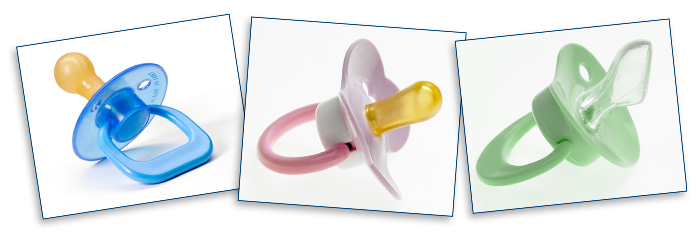 There are three main types of pacifier nipple. The rounded or crown nipple is designed to function most like a bottle for bottle fed babies. A symmetrical pacifier is shaped most naturally like mom and mimics breast feeding. Lastly is the orthodontic pacifier with a flat tip. This pacifier is designed to support the shape of your baby’s developing palate and jaw. When sucking on an orthodontic pacifier, the nipple flattens to the palette to provide the most natural sucking action, reducing pressure on the gums and developing teeth. Studies suggest these pacifiers can reduce open bite and overbite issues typically seen with other pacifiers.
There are three main types of pacifier nipple. The rounded or crown nipple is designed to function most like a bottle for bottle fed babies. A symmetrical pacifier is shaped most naturally like mom and mimics breast feeding. Lastly is the orthodontic pacifier with a flat tip. This pacifier is designed to support the shape of your baby’s developing palate and jaw. When sucking on an orthodontic pacifier, the nipple flattens to the palette to provide the most natural sucking action, reducing pressure on the gums and developing teeth. Studies suggest these pacifiers can reduce open bite and overbite issues typically seen with other pacifiers.
 According to Dr. Razdolsky, compared to modern humans our prehistoric ancestors had toothier mouths, larger molars, and thicker enamel. This has most largely been attributed to dietary changes. For example, early human diets consisted of course, hard-to-chew foods like roots, nuts, leaves and meats that required immense jaw strength and larger elongated jaws. With evolution and the shift to cooked foods, farming and a reliance on a softer food palette, our brains have become larger and jaws began shrinking over the course of millions of years to today where humans typically end up with smaller jaws with barely room for 32 teeth, including four wisdom teeth, by the time we are fully adult.
According to Dr. Razdolsky, compared to modern humans our prehistoric ancestors had toothier mouths, larger molars, and thicker enamel. This has most largely been attributed to dietary changes. For example, early human diets consisted of course, hard-to-chew foods like roots, nuts, leaves and meats that required immense jaw strength and larger elongated jaws. With evolution and the shift to cooked foods, farming and a reliance on a softer food palette, our brains have become larger and jaws began shrinking over the course of millions of years to today where humans typically end up with smaller jaws with barely room for 32 teeth, including four wisdom teeth, by the time we are fully adult.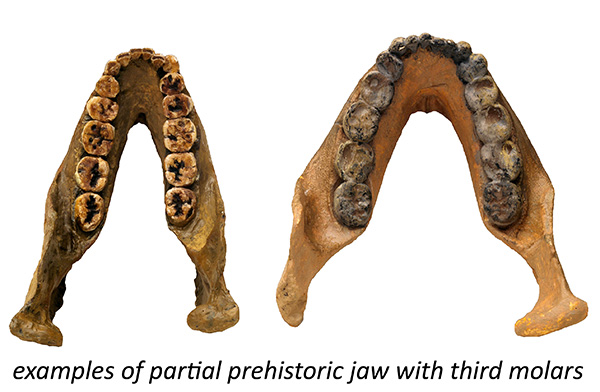




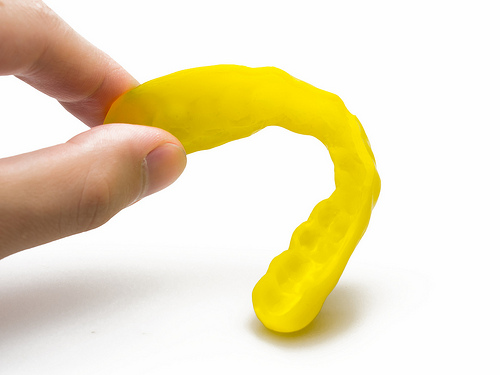





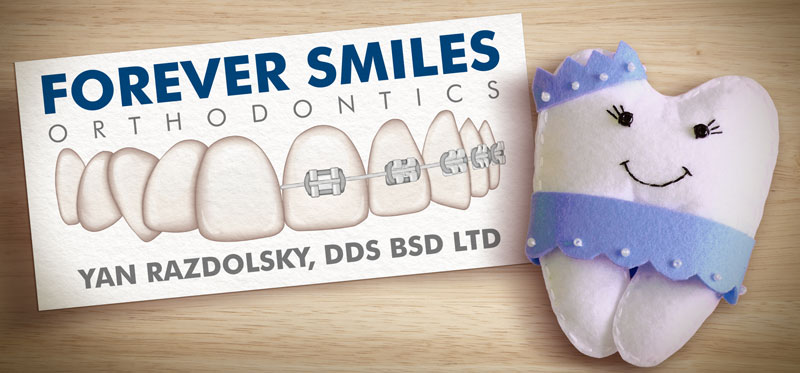











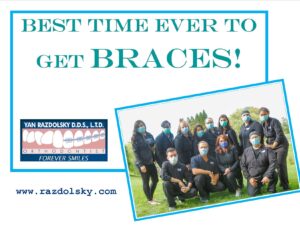





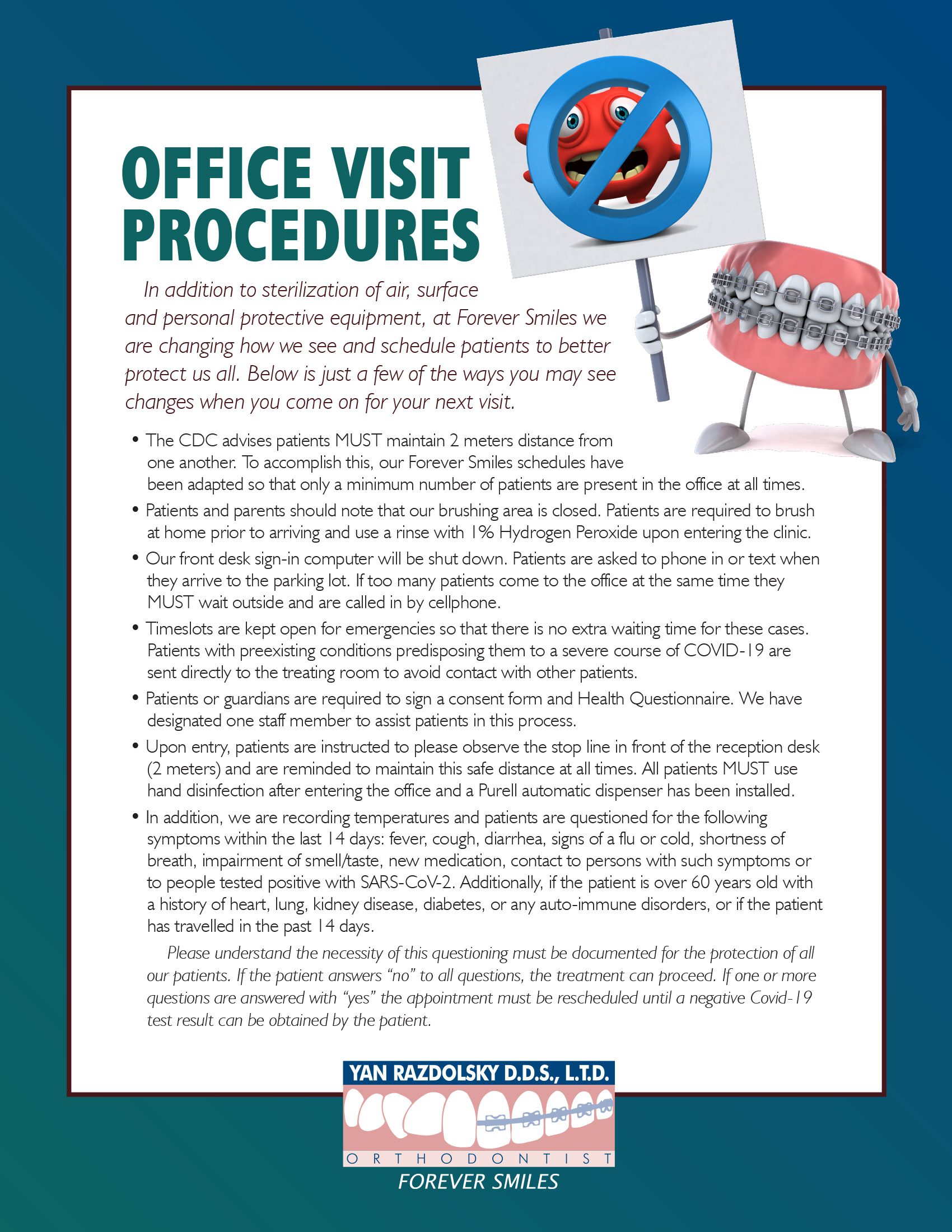
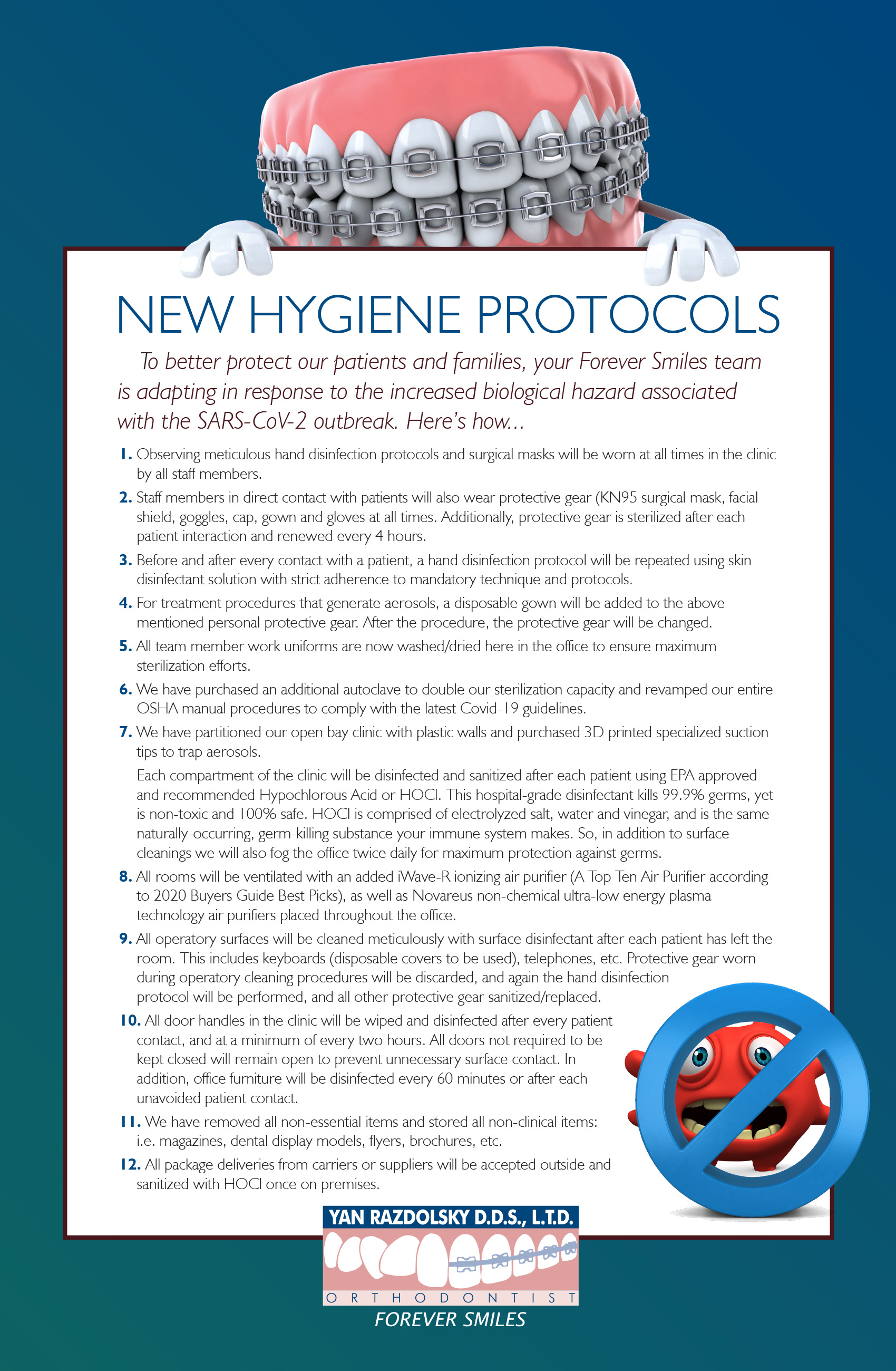











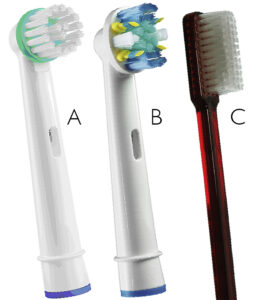





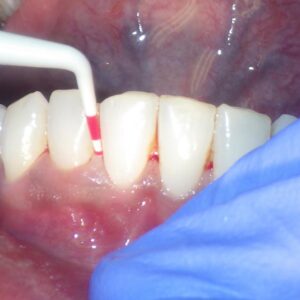





















































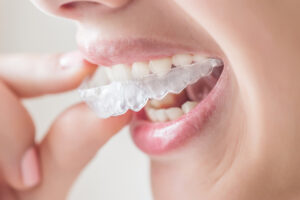




![Razdolsky_FBblog [0901516]](http://blog.sesamehub.com/razdolsky-yan2/files/2016/10/Razdolsky_FBblog-0901516-791x1024.jpg)











 health of our kids is what our mission is all about!
health of our kids is what our mission is all about!
![AAO Orlando-01 [FeaturePic]](http://www.razdolsky.com/assets/uploads/wp-content/uploads/2016/05/AAO-Orlando-01-FeaturePic-1024x682.jpg)











































 July 2013 is when we added the
July 2013 is when we added the Forever Smiles
Forever Smiles
 Hopefully while you and your college student took time this summer to prepare for a successful college experience, you didn’t forget that preparations must also be made to ensure their teeth remain as healthy as their grades.
Hopefully while you and your college student took time this summer to prepare for a successful college experience, you didn’t forget that preparations must also be made to ensure their teeth remain as healthy as their grades. This summer,
This summer,  Members of our staff visited the
Members of our staff visited the  This educational seminar is for dental professionals, and it gives attendees an opportunity to earn six continuing education credits.
This educational seminar is for dental professionals, and it gives attendees an opportunity to earn six continuing education credits. 1. Overall, how would you rate your experience at our office?
1. Overall, how would you rate your experience at our office?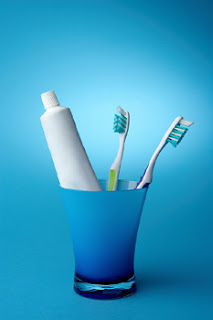

 2013 is almost here, and it's a great time of year to get started on a lifetime of straight, dazzling and confident smiles. We are proud to offer some of today's most innovative orthodontic technologies that can straighten your smile in less time than you ever imagined. Not only do today’s braces and other orthodontic treatments straighten your teeth quicker, they also offer greater comfort for you, and require fewer visits to our office.
2013 is almost here, and it's a great time of year to get started on a lifetime of straight, dazzling and confident smiles. We are proud to offer some of today's most innovative orthodontic technologies that can straighten your smile in less time than you ever imagined. Not only do today’s braces and other orthodontic treatments straighten your teeth quicker, they also offer greater comfort for you, and require fewer visits to our office. Hill wore clear braces along with a black dress at the Country Music Association Awards in November. The country singer revealed she had to get braces because she didn’t wear her retainer regularly after completing orthodontic treatment as a teenager, and she is now a good role model for two of her daughters who have braces.
Hill wore clear braces along with a black dress at the Country Music Association Awards in November. The country singer revealed she had to get braces because she didn’t wear her retainer regularly after completing orthodontic treatment as a teenager, and she is now a good role model for two of her daughters who have braces. BUFFALO GROVE, ILLINOIS— If you’re a teenager or the parent of one, you’ve most likely seen Katy Perry’s “Last Friday Night” music video, where she portrays a nerdy girl turned party animal.
BUFFALO GROVE, ILLINOIS— If you’re a teenager or the parent of one, you’ve most likely seen Katy Perry’s “Last Friday Night” music video, where she portrays a nerdy girl turned party animal.

 “We’re approaching the time of year when we see more patients with broken appliances or bent wires caused by eating candies that aren’t compatible with braces,” says Buffalo Grove orthodontist Dr. Yan Razdolsky. “We hope our candy buy back program will help some patients avoid the temptation by donating the candies that are unsafe for braces.”
“We’re approaching the time of year when we see more patients with broken appliances or bent wires caused by eating candies that aren’t compatible with braces,” says Buffalo Grove orthodontist Dr. Yan Razdolsky. “We hope our candy buy back program will help some patients avoid the temptation by donating the candies that are unsafe for braces.” We are excited to share with our patients that our Great Pumpkin Contest to guess the weight of a giant pumpkin which begins on October 1 until November 21, and we hope you’ll join us in the fun. Each year, we bring a giant pumpkin in and ask our patients and other office visitors to guess how much it weighs. This year, the person whose guess is closest to the actual weight will win a $50 gift card to the Apple Store.
We are excited to share with our patients that our Great Pumpkin Contest to guess the weight of a giant pumpkin which begins on October 1 until November 21, and we hope you’ll join us in the fun. Each year, we bring a giant pumpkin in and ask our patients and other office visitors to guess how much it weighs. This year, the person whose guess is closest to the actual weight will win a $50 gift card to the Apple Store. Orthodontic braces are used to straighten the teeth, which not only creates a more pleasing appearance, but also helps prevent tooth decay and other oral health problems. Braces are only effective when they are properly cared for, however. Certain foods, for example, are better suited for individuals who have braces, as opposed to hard and sticky foods that can cause damage. So what types of foods should you or your kids eat to protect dental appliances?
Orthodontic braces are used to straighten the teeth, which not only creates a more pleasing appearance, but also helps prevent tooth decay and other oral health problems. Braces are only effective when they are properly cared for, however. Certain foods, for example, are better suited for individuals who have braces, as opposed to hard and sticky foods that can cause damage. So what types of foods should you or your kids eat to protect dental appliances?
 It is with great excitement that we share the news that one of our patients, 13-year-old Elina Nikerina, has won gold at the World Championship of Performing Arts in Los Angeles.
It is with great excitement that we share the news that one of our patients, 13-year-old Elina Nikerina, has won gold at the World Championship of Performing Arts in Los Angeles.





 Adults who need orthodontic care often share the misconception that they are too old for braces and would rather not deal with the embarrassment. You are probably familiar with horror stories about rubber bands snapping, mishaps with kissing, and unsightly food sticking in metal braces. Many adults believe that braces are just for children, but they are neglecting all the benefits of correcting misaligned teeth. Braces may cause you to feel self-conscious, but they are temporary. Along with straightening your teeth, braces also provide the following benefits:
Adults who need orthodontic care often share the misconception that they are too old for braces and would rather not deal with the embarrassment. You are probably familiar with horror stories about rubber bands snapping, mishaps with kissing, and unsightly food sticking in metal braces. Many adults believe that braces are just for children, but they are neglecting all the benefits of correcting misaligned teeth. Braces may cause you to feel self-conscious, but they are temporary. Along with straightening your teeth, braces also provide the following benefits: When coming to our office to have braces put on, you may find yourself feeling a bit intimated and nervous about the experience. We hope to help you feel more at ease by explaining exactly what the different parts of braces are, and what they do.
When coming to our office to have braces put on, you may find yourself feeling a bit intimated and nervous about the experience. We hope to help you feel more at ease by explaining exactly what the different parts of braces are, and what they do. Here at Forever Smiles, we’ve created a new tongue-in-cheek definition for the word: spending hard-earned money on orthodontic treatment and then getting an oral piercing.
Here at Forever Smiles, we’ve created a new tongue-in-cheek definition for the word: spending hard-earned money on orthodontic treatment and then getting an oral piercing.





 The number one goal of orthodontic treatment is to give you or your child a good bite, meaning straight teeth that work well with the teeth in the opposite jaw. A good bite makes it easier for you to eat, chew and speak. It can enhance your dental health and your overall health, and may well improve your self-esteem. As a part of your comprehensive dental health care plan, orthodontic treatment can help you retain your teeth—and your smile—for a lifetime.
The number one goal of orthodontic treatment is to give you or your child a good bite, meaning straight teeth that work well with the teeth in the opposite jaw. A good bite makes it easier for you to eat, chew and speak. It can enhance your dental health and your overall health, and may well improve your self-esteem. As a part of your comprehensive dental health care plan, orthodontic treatment can help you retain your teeth—and your smile—for a lifetime. Through his participation in the American Association of Orthodontists Donated Orthodontic Services program, Dr. Razdolsky is changing the lives of two young sisters from Chicago.
Through his participation in the American Association of Orthodontists Donated Orthodontic Services program, Dr. Razdolsky is changing the lives of two young sisters from Chicago. At our practice, we embrace technology, whether it’s through the innovative treatments we offer, our high-tech web site or our
At our practice, we embrace technology, whether it’s through the innovative treatments we offer, our high-tech web site or our  [/caption]
[/caption]
 Great question! When you first come in for your initial consultation, the Doctor will conduct a comprehensive examination to assess your oral health. This will better enable us to determine the best treatment method for you.
Great question! When you first come in for your initial consultation, the Doctor will conduct a comprehensive examination to assess your oral health. This will better enable us to determine the best treatment method for you.



 The number one goal of orthodontic treatment is to give you or your child a good bite, meaning straight teeth that work well with the teeth in the opposite jaw. A good bite makes it easier for you to eat, chew, and speak. It can enhance your dental health and your overall health, and may well improve your self-esteem. As a part of your comprehensive dental health care plan, orthodontic treatment can help you retain you teeth—and your smile—for a lifetime.
The number one goal of orthodontic treatment is to give you or your child a good bite, meaning straight teeth that work well with the teeth in the opposite jaw. A good bite makes it easier for you to eat, chew, and speak. It can enhance your dental health and your overall health, and may well improve your self-esteem. As a part of your comprehensive dental health care plan, orthodontic treatment can help you retain you teeth—and your smile—for a lifetime. We're pleased to share that Natalie will be competing for Team USA this weekend! Please join us in wishing her the best of luck!
We're pleased to share that Natalie will be competing for Team USA this weekend! Please join us in wishing her the best of luck! All of us at
All of us at 
 BUFFALO GROVE, ILLINOIS – The Forever Smiles team and Dr. Yan Razdolsky, a
BUFFALO GROVE, ILLINOIS – The Forever Smiles team and Dr. Yan Razdolsky, a 

 When you visit
When you visit  Invisalign clear aligners can be a great option for improving the look of your smile.
Invisalign clear aligners can be a great option for improving the look of your smile. 
 Your smile is totally unique, so the time you’ll need to spend undergoing orthodontic treatment will also be unique. Generally, orthodontic treatment will take about two years, and this is for good reason. During this time, your teeth will slowly move into their desired positions, leaving you with a great smile with as little discomfort as possible. Rushing treatment can result in a less than perfect smile with a greater chance of tooth movement after your treatment is complete. At
Your smile is totally unique, so the time you’ll need to spend undergoing orthodontic treatment will also be unique. Generally, orthodontic treatment will take about two years, and this is for good reason. During this time, your teeth will slowly move into their desired positions, leaving you with a great smile with as little discomfort as possible. Rushing treatment can result in a less than perfect smile with a greater chance of tooth movement after your treatment is complete. At  Each February for the past 62 years, the American Dental Association (ADA) has sponsored National Children's Dental Health Month to raise awareness about the importance of oral health. Developing good habits at an early age and scheduling regular dental visits helps children get a good start on a lifetime of healthy teeth and gums.
Each February for the past 62 years, the American Dental Association (ADA) has sponsored National Children's Dental Health Month to raise awareness about the importance of oral health. Developing good habits at an early age and scheduling regular dental visits helps children get a good start on a lifetime of healthy teeth and gums. While mouthwash is not an alternative to regular brushing and flossing, it can help keep your teeth and gums clean and healthy. There are several different types of mouthwashes available, and all of them will help do different things for your smile. The most common types of mouthwashes are:
While mouthwash is not an alternative to regular brushing and flossing, it can help keep your teeth and gums clean and healthy. There are several different types of mouthwashes available, and all of them will help do different things for your smile. The most common types of mouthwashes are: Great question!
Great question! At
At  Buffalo Grove orthodontist
Buffalo Grove orthodontist  Many folks consider the beginning of a new year a time to not only reflect on the year that was, but also to set personal goals for the upcoming year. How are you planning to improve your health and happiness in 2012? Drs. Yan Razdolsky and Kapil Vij and our team recommend that you make a New Year’s resolution to benefit your oral health!
Many folks consider the beginning of a new year a time to not only reflect on the year that was, but also to set personal goals for the upcoming year. How are you planning to improve your health and happiness in 2012? Drs. Yan Razdolsky and Kapil Vij and our team recommend that you make a New Year’s resolution to benefit your oral health!

 At Forever Smiles, we know orthodontic emergencies are never convenient nor timely. If you are a patient of record,
At Forever Smiles, we know orthodontic emergencies are never convenient nor timely. If you are a patient of record,  Happy holidays from all of us at Forever Smiles! As you probably know, you can always connect with Dr. Yan Razdolsky and our team on our Facebook page, but we also encourage you to call us and let us know if you have any new phone numbers or if your contact information has changed!
Happy holidays from all of us at Forever Smiles! As you probably know, you can always connect with Dr. Yan Razdolsky and our team on our Facebook page, but we also encourage you to call us and let us know if you have any new phone numbers or if your contact information has changed! In honor of our patient David Tessler,
In honor of our patient David Tessler,  Here at
Here at  You just got braces at Forever Smiles and
You just got braces at Forever Smiles and  Does the thought of having braces bring you down? The team at
Does the thought of having braces bring you down? The team at  At
At  It’s almost that spooky time of year again and
It’s almost that spooky time of year again and  Happy October! For those who don't know, it’s
Happy October! For those who don't know, it’s 

 Braces aren’t just for pre-adolescents and teenagers anymore!
Braces aren’t just for pre-adolescents and teenagers anymore!  At
At  On Monday, Aug. 29 after work, Amie and Nancy participated in a fundraiser held at the Brunswick Zone in Glendale Heights for the Mateo's Kids non-profit organization.
On Monday, Aug. 29 after work, Amie and Nancy participated in a fundraiser held at the Brunswick Zone in Glendale Heights for the Mateo's Kids non-profit organization.  Are you brushing and flossing daily during your orthodontic treatment? If yes, that’s great! But, don’t forget that it’s also important for you to visit your general dentist every 3-to-6 months in addition to brushing your teeth and flossing (and visiting our office, of course). Regular dental checkups are important for maintaining good oral health, especially during orthodontic treatment.
Are you brushing and flossing daily during your orthodontic treatment? If yes, that’s great! But, don’t forget that it’s also important for you to visit your general dentist every 3-to-6 months in addition to brushing your teeth and flossing (and visiting our office, of course). Regular dental checkups are important for maintaining good oral health, especially during orthodontic treatment. Dr. Razdolsky's current patient Dylan T. recently participated in the State Gymnastics Competition held at the Illinois State University. Dylan was awarded several medals from the following: Floor Exercise, Parallel Bars, High Bar, Pommel Horse, Rings, Vault and All Around.
Dr. Razdolsky's current patient Dylan T. recently participated in the State Gymnastics Competition held at the Illinois State University. Dylan was awarded several medals from the following: Floor Exercise, Parallel Bars, High Bar, Pommel Horse, Rings, Vault and All Around. Lately, Dr. Razdolsky and Dr. Vij have noticed that there has been a lot of debate in the health community about dental x-rays and radiation. Here at
Lately, Dr. Razdolsky and Dr. Vij have noticed that there has been a lot of debate in the health community about dental x-rays and radiation. Here at 





















































